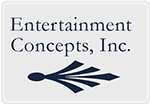 Owners and operators are governed by laws, regulations, codes, and specific contractual restrictions in terms of their everyday operations and how they control their operations. No one can control “Acts of God,” weather and other natural conditions. Insurance companies and their lawyers may well establish limitations or specific additional conditions on their total liability or denial of liability under specific conditions and situations. It is in your best interest to be aware of your personal or business liabilities when you, your staff or your guests violate the protection coverage you have established. Having legal counsel to review contract documents, warrantees, insurance coverage and related issues is an integral component of your overall “project team.”
Owners and operators are governed by laws, regulations, codes, and specific contractual restrictions in terms of their everyday operations and how they control their operations. No one can control “Acts of God,” weather and other natural conditions. Insurance companies and their lawyers may well establish limitations or specific additional conditions on their total liability or denial of liability under specific conditions and situations. It is in your best interest to be aware of your personal or business liabilities when you, your staff or your guests violate the protection coverage you have established. Having legal counsel to review contract documents, warrantees, insurance coverage and related issues is an integral component of your overall “project team.”
The above represents the wide range of regulatory agencies that may or not be specific or apply to all businesses and personal situations. It is a list of possibilities that is meant as a “WAKE UP CALL” for all of us in terms of taking a good look at the physical condition of individual facilities and attractions, staff training, possible new attractions, required warnings for our guests, proper insurance coverage and related elements that may come under the jurisdiction of one or more of the above listed entities. I make no claim to have included every possible consideration that should perhaps be given, but rather suggest that it is a good starting point.
New Locations: When considering developing a new business there are a wide range of issues to consider; including, but not limited to defining the business concept, identifying the target market, establishing the market size, existing competition, and one’s capability to undertake the complexity of actually creating, financing, building and operating the proposed business. There are a lot of steps to be taken from concept to opening for business. Having created a viable concept, established a committed project team and the selection of a suitable location, you have just begun a challenging, often frustrating voyage of discovery almost every step of the way.
Identifying the specific site can range from “sheer good luck” to an often-frustrating sequence of false starts due to unanticipated challenges generated by government bureaucracy. This can include soil conditions, stormwater management restrictions or concerns, traffic and access restrictions, unresolved environmental concerns, political or social agitators with or without viable concerns, aggressive competitors, or other existing conditions all of which can impact establishing suitability and actually acquiring it.
Existing Site Conditions: Assuming you are at your starting point, review your present situation, in terms of any physical buildings and existing topography. Review your building(s) in terms of physical condition concerning good, fair, or poor condition, appearance wise? Is there sufficient power service for your current operation. Do you have sufficient power capacity to add proposed improvements, attractions, or amenities? Are all your attractions current and productive? If so, are you content with your present status?
For those who yearn for renovation, revision or expansion now is a good time to review your potential. This includes personal motivation, physical and mental capabilities, existing space, financial limitations, and your existing competition. Are you convinced your current market has the demographics to justify correcting and expanding the concept? Can you commit the time, effort and finances required to accomplish your current and future goals? Now is the point of beginning in terms of dealing with the future. Take the time to consider potential options and the relative costs, revenues and realistic ultimate parameters.
Addressing Gross Deficiencies: Should your review identify one or more items you feel must be remedied, this is the time to do so. There is the obvious decision as to what direction to take in terms of bringing the existing attraction up to current standards or beyond, or to construct a new attraction or amenity. One potential benefit to replacement is being an opportunity to change over to a completely new attraction or amenity due to the unique opportunity of having the space available. Each option provides benefits while at the same may result in a better or worse ultimate result.
Depending on one’s own perception as to their own skills, this may well be the time to bring in an industry expert with a far less biased viewpoint. Keep in mind the reality that the final decision is still based on assumptions as to what the future will bring in terms of the economy, new developments in attractions, unanticipated new competitors, and other future developments.
Upgrading When Critical: When any element of your facility is found to require repair or upgrading, the decision usually involves whether upgrading or a complete replacement is more appropriate. Resolving the issue for a specific attraction or amenity may well fall within your own or staff’s expertise and thus be easily resolved. Larger and more complex attractions may warrant bringing in an experienced industry consultant.
Establishing Good Relationships: Businesses always function more efficiently when the operation upper rates in. Obviously, businesses function better when there are cordial relationships with suppliers, vendors, guests and internal staff.
To be successful when dealing with the public, the old expression “you get more bees with honey than with vinegar” probably applies universally. Seek to create an atmosphere that projects friendly, comfortable surroundings and leaves guests feeling they really are guests. This involves everyone, including management and every employee.
Maintaining a friendly environment is an important step in developing a reputation as the place to go for an enjoyable experience. Guest comfort in terms of feeling welcome and appreciated is an important part of the overall guest experience and contributes to the rate of return visits a facility generates. The overall experience is a combination of a guest friendly environment combined with the combination of entertaining and exciting experiences gained from quality attractions and amenities.
For existing operations, the first step to take is a long hard honest look at your current relations with suppliers, agencies neighbors and competitors. Good relationships are the foundation for successful operations. Without solid working relationships with suppliers, vendors, and other local businesses there is always the possibility of a bad relationship interfering with successful solution of emergency situations.
Some existing operations may have come into existence under less-than-ideal relationships with neighbors and local agencies. Each of these situations must be approached carefully from the standpoint of understanding the original issues of contention and how to mitigate the current relationship in such a way that both parties will feel that there has been a strong movement toward being good neighbors and the recognition that future issues will be addressed in a cooperative manner.
The specific solutions to improving relationships may vary from situation to situation; but could easily include an agreed upon periodic mutual review of any issues that may remain.
For new projects it is advisable to take a close look at the existing community. Regulatory agencies competition and neighbors it is important to establish and the amiable relationship with local building and planning departments, planning and zoning boards, engineering and public works department and local community government leaders. Be aware that there may be zoning, traffic, noise, drainage, environmental or other regulations that could have a serious impact on the successful completion of your project. Being aware of the problems up front provides an opportunity to better prepare your project for presentation. This may involve seeking additional up-front services from professionals with experience in the specific issues of concern.
A wise move in establishing amicable relationship with your potential neighbors is to establish informational meetings with the neighbors in advance of making formal application for project approval. Far too often projects have been killed because neighbors rose up in that position because they felt they were being ignored in the process. Each individual project will have specific issues of concern for specific neighborhoods and consideration should be given as to how to make the presentation in the most favorable format.
Site Security: Each project brings with it security concerns in terms of market share, general demographics, maintaining on-site safe ongoing operations and guest safety. Insurance coverage may provide lost protection with respect to the various equipment, food, beverage and redemption items. It also can provide physical safety safeguards in terms of liability coverage. Some of the greatest challenges experienced in today's market involve what laws and regulations local enforcement agencies permit in terms provision of physical security. This applies to retail theft physical demonstrations and even physical assault. It is definitely the challenge that each of us face in localized circumstances which may vary greatly in what today is considered protection.
It is very important that every operation determines the legal requirements as well as legal restrictions on what security can actually be provided on site. It is one thing to provide security against theft but there is the further question of what is permissible in terms of providing physical security for your guests and staff on site. This has been and continues to be a moving target in many parts of the country and we urge each operator to establish the actual laws and limitations within your specific jurisdiction.
Emergency Exits and Paths: It is equally important to provide signage and hardware with supplemental lighting mounted floor pathways to guide in the event power loss. This would require an emergency power unit that comes on automatically in the event there was a power failure.
Staff Training: Staff training is an ongoing reality for successful FECs. Most employees will retain the most repetitive elements of their specific work assignments but will have widely varying levels of retention for almost everything else. For this reason, it is important to establish review sessions every two weeks to reinforce consistent operations.
Staff update meetings should include reemphasis of safety and social concerns with respect to work assignments and specific attraction equipment. Where appropriate they must be advised that these are minimum expectations.
Conflict resolution can be very challenging and whenever possible, having trained supervisors to defuse situations before they become problematic can pay huge dividends. Make all employees aware that it is not their responsibility to resolve conflicts with individual guests but rather to defer to supervisors or other members of management in conflict resolution.
Physical conflict is to be avoided. However, employees that are physically attacked have every right to defend themselves. In such situations supervisors or security personnel should be involved as soon as possible. Note: this is the writer’s opinion only (not a legal statement). The current wildly varying liberal interpretations makes this an issue one that must be defined by local law and regulation and applies to both perpetrators and victims.
Employee Handbook: Each new employee should be given an “Employee Handbook” at the time of their employment. This should be accompanied with a statement that they have read the manual and understand their job description and responsibilities. Once they have read the manual they should sign and date the statement and return it to the person that employed them. These statements should then be placed in the employee’s personnel file.
A successful handbook is one that presents the firm, its goals, mission statement and a description of the firm’s business. It should clearly state the company’s expectations in terms of appearance, uniforms, restrictions due to safety requirements such as long hair, supplemental clothing items, costume jewelry, sexual or social messaging on clothing while on site, haircuts, religious headgear and other potentially contentious issues.
Never assume employees will remember all the basic requirements of their specific job assignment, let alone the more technical elements that might be involved with individual attraction. To keep employee awareness at a reasonable level, a two-week gap between operating safety and maintenance sessions should be considered to avoid embarrassing, unsafe or incorrect operation of the attractions.
It is important to create an easily read employee handbook that outlines expectations in terms of work assignments, neatness, friendly attitudes and cooperation with other staff members. It should state the importance of properly maintaining equipment and maintenance records. and recording the process for review by inspectors.
All statements in the handbook should follow current government regulations governing free speech, discrimination, sexual harassment, and similar regulations. These regulations should be posted if required. Your insurance carrier can be a good source of potential language as can many of the industry’s trade organizations.
We recommend you have your legal counsel review the handbook to be comfortable with its requirements and commitments.
Maintenance Records: Maintenance records are an important element in assuring that rides, go-karts, bumper boats and other elements are in good, safe operating condition. Most if not all of the records are required by governmental regulations and must be kept available for review during inspection visits.
These records shall indicate all preventative maintenance services have been done on time, indicate any abnormalities, in the individual card noted and kept in the file for ready reference when state inspectors come in or one insurance representatives come in each card manufacturer has a recommended set of inspection and maintenance operations that they recommend.
Site Safety Inspections: Regulatory agencies perform periodic inspections of rides and other attractions to assure that the public and staff alike are protected. Part of the protection is generated by daily inspection of all vehicles, rides and other elements that are used by the public. Proof of the daily inspections is recorded and maintained by means of daily and weekly maintenance records filed out and signed by the staff members performing the specific inspections.
There are physical inspections that should be performed daily to ensure a smooth operation and protect the safety of the facility’s guests and operating staff. These include the following:
Go-Karts – Each kart should be inspected to assure the engine is functioning properly, the brakes, steering and seat belts function properly, tires are inflated properly and in good condition, the gas tank is full, the fuel lines and caps in good condition and properly sealed, with no visible leaks and the kart is clean.
Go-Kart Track – Prior to opening for operation the barrier rails and safety gates should be visually checked for broken welds, excessive kinks, and improperly fastened barrier tires. The gates, safety lights and track lighting system should function properly. The track pavement surface should be inspected to remove any items on the surface, broken concrete and other issues that could prove hazardous to the guests or staff.
Miniature Golf Course- Prior to opening the course should be inspected for torn carpet, loose edging, debris or other issues that might become hazardous.
Bumper Boats and Pond – Verify that the water has the proper ph, is clean with no floating debris, is at the correct surface elevation, all pumps and filters functioning properly, decks clean, boat controls working properly, squirt guns functioning, boat tubes fully inflated, safety chains in place, boat body tubs clean and dry, battery chargers functioning, batteries charged, no charging cables left on the deck, overhead lighting functioning, and life preservers and or other safety devices in correct locations.
Bumper cars and Arena – The bumper cars shall be clean, controls functioning properly. body tube and tires properly inflated, body bumpers intact, battery chargers functioning properly, batteries fully charged, no charging cables left on the arena floor, the arena floor shall be clean and the barrier rails in place.
Thinking Outside the Box – Whenever working on a new concept, rehabilitation, or up-grade; we always take a minute to “think outside the box” even if it’s only for a few minutes. Almost every site, existing facility or new concept has a potential for multiple uses, future expansion, or modification. There might be worthy options that should at least be given a few moments of attention.
Safety Boxes around the Facility: We highly recommend “safety boxes” that are equipped with fire extinguishers, web cutters and fire blankets be located at strategic points around go-kart tracks. The local fire marshal or other regulating agency may have specific requirements with respect to equipment, specifications and location.
Use of Emergency Equipment - Staff members should be trained in the basic use of fire extinguishers and other safety equipment as may be required by specific attractions or equipment. All employees should be aware of the need to report the use of any fire extinguisher so that it can be either recharged or replaced immediately. No partially filled fire extinguishers should be left without proper attention.
First Aid Kits - First aid kits with basic first aid materials should be located at visible locations for easy access. The type, placement and materials contained should be following liability insurance carrier requirements and/or local fire marshal or other regulating agency requirements.
Flat Rides and other Attractions - The wide variety of fixed flat ride equipment and other indoor and outdoor attractions available, each with specific safety, operating and maintenance requirements can vary widely. Take the time to evaluate each attraction, identify the specific requirements and establish daily and other periodic inspection requirements set forth by the manufacturers plus the specific maintenance inspection and documentation requirements required by the appropriate state or local inspection agency responsible for the said inspections. This information shall be added to the handbook and/or posted, as required.
Never take safety for granted and never assume that someone else is responsible. Verify and verify again. Each situation has its own set of parameters and responsibilities. Double check them all. Know your equipment, operating and maintenance requirements, safety concerns and regulatory responsibilities.
 Conclusion: Any business venture will have specific conditions, physical and financial challenges, regulatory agencies with codes, ordinances, zoning restrictions, fees, inspections, and other potential challenges. Each of these can be perfunctory or challenging, partially or completely because of the attitude or approach taken.
Conclusion: Any business venture will have specific conditions, physical and financial challenges, regulatory agencies with codes, ordinances, zoning restrictions, fees, inspections, and other potential challenges. Each of these can be perfunctory or challenging, partially or completely because of the attitude or approach taken.
Moving from concept to conclusion can be daunting or a smooth operation depending on the course taken. Keep in mind shortcuts can have serious consequences, when rules, regulations and overall reality are ignored. Proceed in haste and regret the results in delays and penalties. Many minor problems become major issues because of the approach taken, failure to have done “due diligence,” ignoring procedures. Never assume someone else has resolved a problem; double check.
Being prepared, identifying the issues, establishing solutions, at the beginning and following through will pay dividends in terms of the ultimate successful
Peter is a Licensed Professional Engineer in Illinois and Michigan and the President of Entertainment Concepts, Inc. (formerly Peter F. Olesen and Associates, Inc.) a firm with more than 39 years of experience designing both outdoor and indoor, family entertainment centers, stand alone go-kart tracks and miniature golf courses, bumper boat ponds and related attractions. The firm has been and continues to be at the forefront of go-kart, miniature golf course and bumper boat pond design, introducing many innovations in safety, geometrics, design and construction methods now widely emulated throughout the industry. The firm has performed more than 660 projects in 46 states, Angola, Brunei, Canada (Alberta, British Columbia, Ontario, Quebec and Saskatchewan), Cuba (Guantanamo Bay), Kazakhstan, Mexico, Puerto Rico, Saudi Arabia and Vietnam. They span feasibility, concept development, master plans, final design and construction engineering. He was a member of the faculty of Foundations Entertainment University (49 seminar presentations over 17 years), presented seminars at the International Association of Amusement Parks and Attractions, FunExpo, Kart Expo and Leisure Expo as well presenting go-kart safety seminars for the State of Ohio. He has, and continues to write articles for industry magazines and internet newsletters. For additional information on projects and services offered please refer to our webpage

 No one has photographic memory of everything they have run across and certainly not on items they never considered. This applies to my article as well. The information I present is not meant to imply that we have presented every specific local, state and federal agency, board, association and other possible bodies that may have authority over your project. In addition, your equipment manufacturers, contractors, insurance agencies will all have required and recommended practices for specific situations, applications, and conditions that impact on your final facility; and they all protect themselves with disclaimers of liability if they are not followed.
No one has photographic memory of everything they have run across and certainly not on items they never considered. This applies to my article as well. The information I present is not meant to imply that we have presented every specific local, state and federal agency, board, association and other possible bodies that may have authority over your project. In addition, your equipment manufacturers, contractors, insurance agencies will all have required and recommended practices for specific situations, applications, and conditions that impact on your final facility; and they all protect themselves with disclaimers of liability if they are not followed.